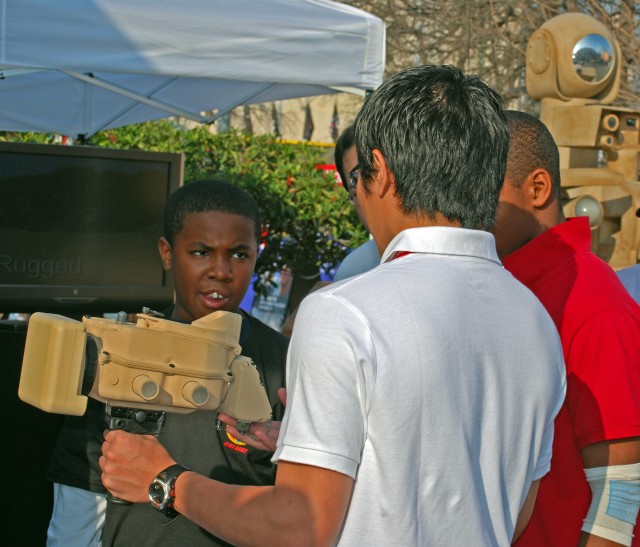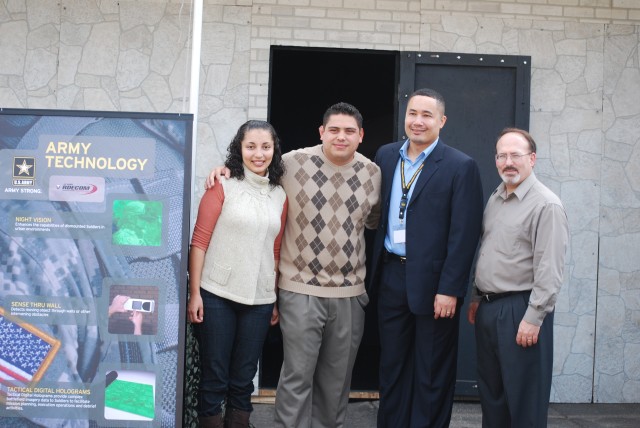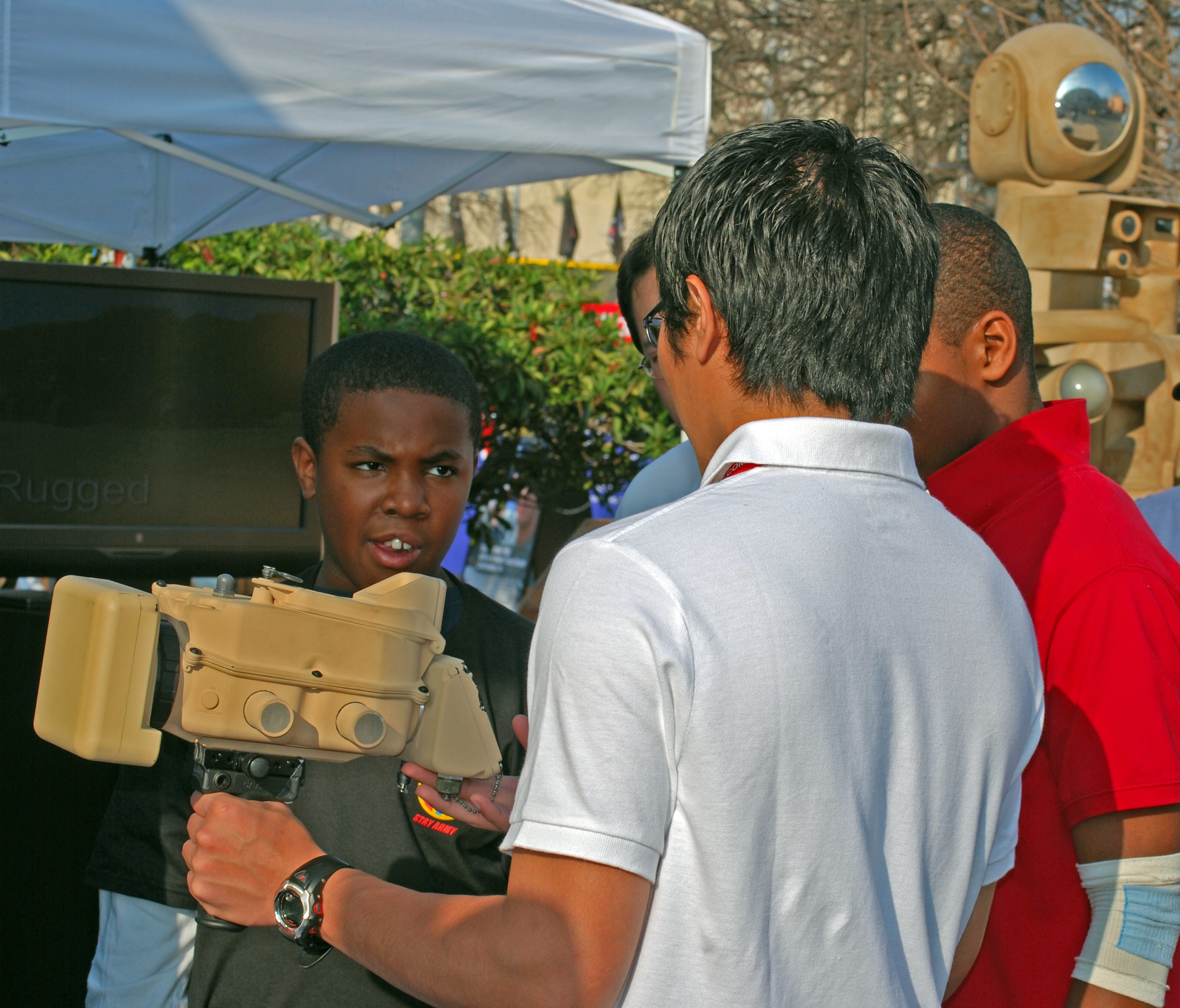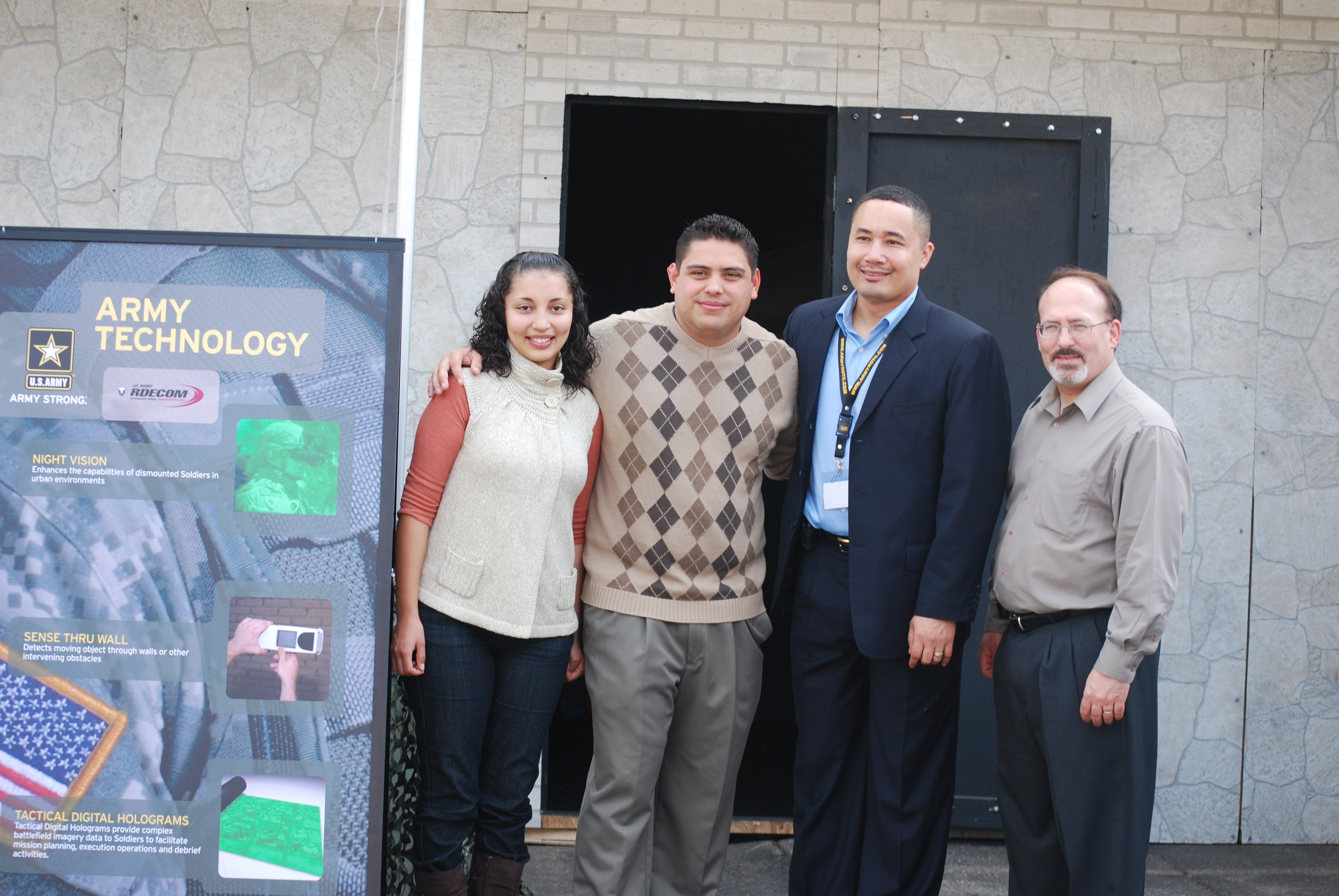Aberdeen Proving Ground, Md. -- Building a house in just a few days is something that might be the making of a reality television show rather than a civil engineering project on behalf of the U.S. Army.
Thirty civil engineering students from the California State University in Los Angeles, however, did just that this winter. They built a structure the Army needed to house its light sensitive technologies at the All American Bowl's Army Strong Zone in San Antonio, and they did it in just nine days.
As members of the Cal State LA chapter of the American Society of Civil Engineers, the students designed and built a 20 foot by 20 foot structure so that the Army could showcase its night vision equipment, tactical digital holographic maps, and its sense through the wall radar imager for the 32,000 people who attended that high school all-star football game.
The engineering students began this effort just two days after their final exams, according to Dr. Keith Moo-Young, Dean for College of Engineering, Computer Science, and Technology at Cal State LA.
"When other students have kicked back to relax, these students took on this project with full vigor with the All American Bowl just three weeks away," he explained.
"During the winter break, ASCE at Cal State L.A. was hard at work, "said Lawrence Lopez of the Cal State chapter. "The Army's Research Development and Engineering Command needed a team able to construct a small model home that would have the capability of being moveable and being assembled in place in less than a day."
"We had to design alternatives, get one approved, buy all the materials, and build it in just nine days," said Claudia Pichardo, one of the two Cal State students who followed the house to the San Antonio event.
Rene Carrillo, the other ASCE chapter member at the Army Strong Zone, said, "We had to make it so that we could disassemble and reassemble it wherever the Army needs it for future showcases. So, that was a nice challenge."
There was a second design challenge because it housed light sensitive technologies. "Basically, when you go inside it has to be pitch black," Carrillo said, "It is light tight."
Weather added one more degree of difficulty to the project when rain delayed the project two days. So, it was December 23 when the students finished the project and shipped it to San Antonio to house the Army technology exhibits.
The structure housed a display of the Aviator's Night Vision Imaging System, a helmet-mounted, image-intensification device. This device enables flight operations under very low or starlight light conditions. It also housed the Thermal Weapon Sight which enables Soldiers with individual weapons to see deep into the battlefield and penetrate obscurants, day or night.
In addition, the Cal State project provided a home for a display of tactical digital holograms. These holographic maps are visualization tools that help Soldiers better understand the complex battlefield imagery of urban combat environments where two dimensional maps and photographs cannot adequately represent a three-dimensional battlefield.
Lt. Col Bob Hribar from the Program Executive Office for Simulations, Training, and Instrumentation explained that the holograms provide Soldiers greater clarity because "the 3-d image provides a true height that you never get from a two-d map. He said a simple light source is all that is required to illuminate the 3D effects, which amounts to "pulling up" the image from the paper.
The structure and the displays it housed made an impression on teenager Henry Mahome of San Antonio during his visit to the Army Strong Zone.
"That was great. The map just popped up when I looked down at it!"
"Taking on this task showed the dedication that our Cal State L.A. ASCE members have for their chapter and its success, "Lopez explained.
"Their hard work and perseverance clearly showed a desire to help the Army and build a partnership with RDECOM," Moo-Young summarized.






Social Sharing